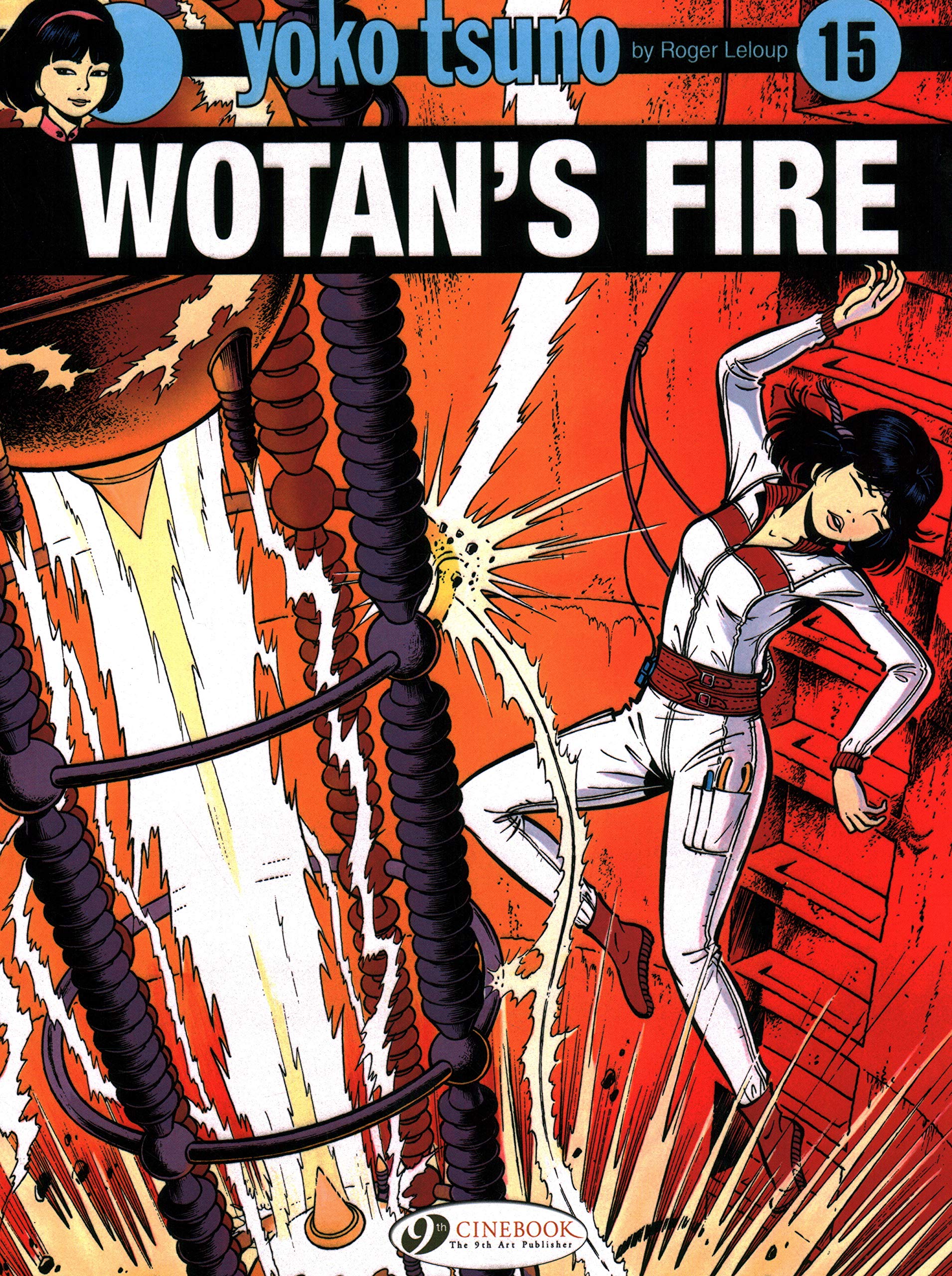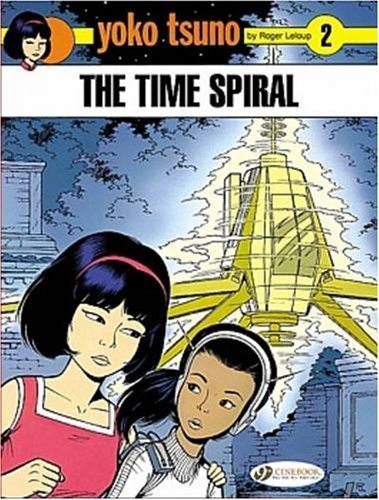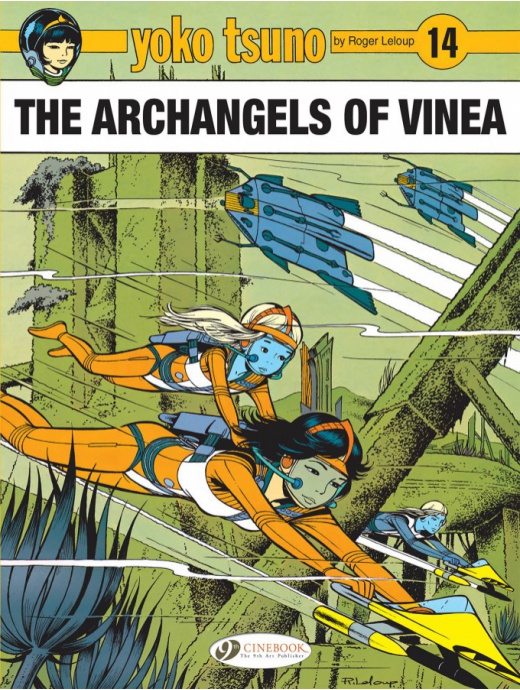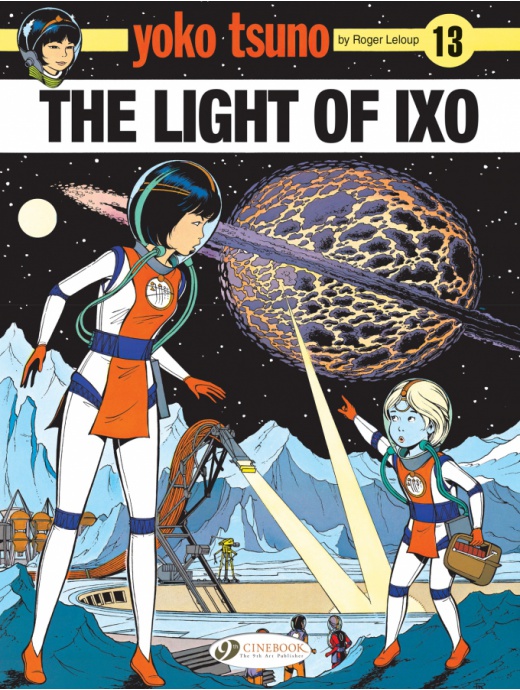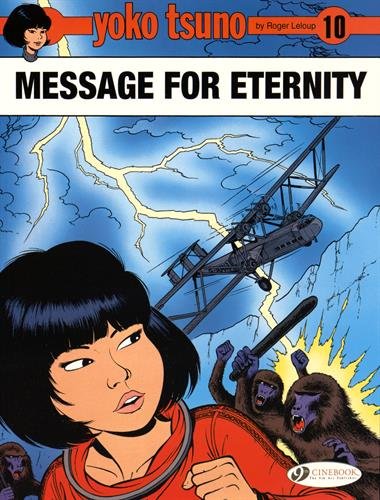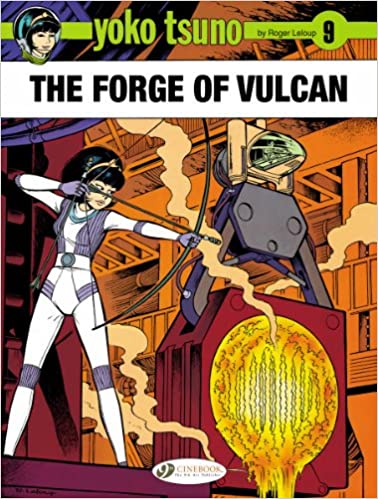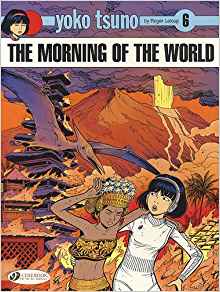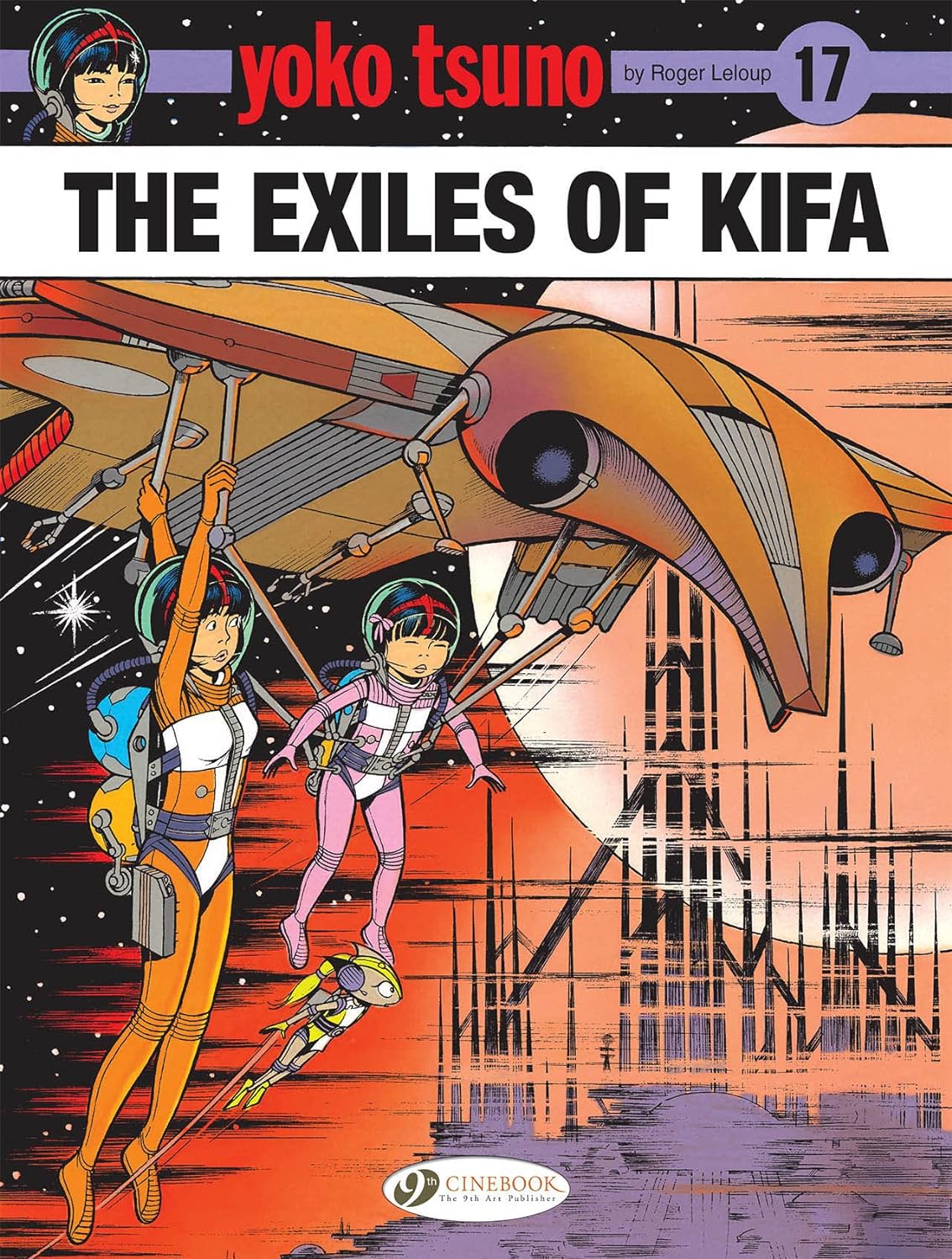
By Roger Leloup, coloured by Studio Leonardo & translated by Jerome Saincantin (Cinebook)
ISBN: 978-1-80044-065-4 (Album PB)
In 1970, indomitable intellectual adventurer and “electronics engineer” Yoko Tsuno began her career in Le Journal de Spirou. She is still delighting readers and making new fans to this day in astonishing, action-packed, astoundingly accessible adventures which are amongst the most intoxicating, absorbing and broad-ranging comics thrillers ever created. The globe-girdling mysteries and space-&-time-spanning epics were devised by multitalented Belgian maestro Roger Leloup who – from 1953 – truly started his own solo career after working as a studio assistant and technical artist on Hergé’s Adventures of Tintin.
Compellingly told, superbly imaginative and – no matter how implausible the premise of any individual yarn may seem – always firmly grounded in hyper-realistic settings underpinned by authentic, unshakably believable technology and scientific principles, Leloup’s illustrated escapades were at the vanguard of a wave of strips revolutionising European comics.
That long-overdue sea-change heralded the rise of competent, clever, brave and formidably capable female protagonists taking their rightful places as heroic ideals and not romantic lures; elevating Continental comics in the process. Such endeavours are as engaging and empowering now as they ever were, none more so than the exploits of Miss Tsuno.
Her first outings (the STILL unavailable Hold-up en hi-fi, La belle et la bête and Cap 351) were mere introductory vignettes in a more cartoonish style before authenticism took hold in 1971 and the unflappable troubleshooter met valiant but lesser male comrades Pol Paris and Vic Van Steen and properly hit her stride in premier full-length saga Le trio de l’étrange (beginning in Le Journal de Spirou’s May 13th edition). From that point Yoko’s cases would include explosive exploits in exotic corners of our world, sinister deep-space sagas and even time-travelling jaunts. There are 30 European albums to date but only 19 translated into English thus far (ironically, none of them digitally).
First serialised in LJdS #2736-2760, Les Exilés de Kifa was crafted in 1990: a tense race against time and hidden agendas far across the universe where our terrestrial trouble-shooters toil beside the disaster-prone lethally pragmatic alien colonists of planet Vinea. Their most trusted ally is Khany: a competent, commanding single mother combing parenting her toddler Poky with saving worlds, leading her people, averting continual cosmic catastrophe and – with Yoko – trying to restore some kind of moral compass to those ancient survivors ruthlessly rebuilding their fallen civilisation and permanently undermining and gaslighting the upstarts who slept out the apocalypse on another planet…
In their initial adventure together, Yoko, Vic and Pol had discovered an enclave of dormant aliens hibernating for eons in the depths of the Earth. After saving the sleepers from robotic/AI subjugation, the humans occasionally helped the refugees (who had fled their planet two million years previously) to rebuild their lost sciences. Ultimately, they accompanied the Vineans when they returned to their own star system and presumed long-dead homeworld. In the years Vineans slept, their primary civilisation collapsed, and the world they have begun to reclaim is much changed, with isolated pockets of the former inhabitants evolved beyond recognition…
They are constantly hostile to their returned descendants. As the re-migrants gradually restore the decadent, much-debased civilisation and culture, the human trio become regular guests and helpers against sabotage and skulduggery…
On a previous visit (The Archangels of Vinea) Yoko had established a unique psychic link with robotic intelligence Queen Hegora: one granting her certain technophilic abilities. On this excursion, the humans – including Tsuno’s adopted daughter Morning Dew (The Dragon of Hong Kong) are exploring another region of the recovering orb: the non-rotating planet’s frozen northern hemisphere where they briefly encounter a derelict space probe before it is (mostly) destroyed under mysterious circumstances…
As Khany investigates a space laser planetary defence station, Yoko receives a vision from Hegora revealing the crashing probe carried a passenger who needs the humans’ help. Guided into high orbit and the upper limits of Khany’s spacecraft, they retrieve a sentient toy robot instants before station commander Balky blasts the probe remnants.
Khany reveals how its kind were constant companions to children until the parents abruptly deemed them too smart and dangerous, subsequently banishing them to distant asteroid Kifa. Needing to know more, Yoko returns to the subsea Archangel City over her human allies’ strident warnings, where the presumed-defunct Queen secretly repairs the adorable toy creature – “Myna” – who reveals Kifa holds many more like her, and has been diverted from its orbit to crash into Vinea. The evil mastermind behind the impending cataclysm is Gobol: the ancient genius who caused so many of primordial Vinea’s woes by granting independence and sentience to robots and computing systems…
As the conference ends, Hegora also gives Yoko her own hyper-advanced deep space ship…
As Myna begs for help, her new friends learn Kifa is Balky’s next target for obliteration and her rapid response sees humans and Vineans blast off for Kifa, with betrayal, incredible scientific secrets, terror, tragedy and malign immortal intelligence Gobol awaiting them…
Once more, however, overwhelming digital malevolence proves inadequate in the face of Yoko Tsuno’s passionate humanity, bold imagination and quick thinking, but her ultimate success comes at great cost and cannot be called a triumph…
Rocket-paced, deviously twisted and terrifying plausible, this race against time and battle with bigotry is superbly mesmerising, proving once more how smarts and combat savvy are pointless without compassion. As always, the most potent asset of these edgy outer space dramas is the astonishingly authentic settings, as ever benefitting from Leloup’s diligent research and meticulous attention to detail.
The Exiles of Kifa is a magnificently wide-screen thriller, tense and compelling, and surely appealing to any fan of blockbuster action fantasy or breathtaking derring-do.
Original edition © Dupuis, 1991 by Roger Leloup. All rights reserved. English translation 2022 © Cinebook Ltd.

